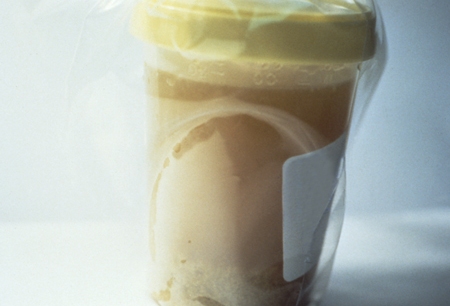Resumo
Definição
História e exame físico
Principais fatores diagnósticos
- diarreia aquosa copiosa
- evidências de depleção de volume
Outros fatores diagnósticos
- idade <5 anos
- ingestão de frutos do mar
- história familiar de recente doença grave similar à cólera
- vômitos
- febre
- dor abdominal
- letargia ou coma
Fatores de risco
- ingestão de água contaminada
- ingestão de alimentos contaminados
- saneamento inadequado
- chuvas fortes e inundações recentes
- diminuição da secreção do suco gástrico
- grupo sanguíneo O
- desnutrição
- Infecção pelo vírus da imunodeficiência humana (HIV)
- ausência de amamentação
Investigações diagnósticas
Primeiras investigações a serem solicitadas
- Hemograma completo
- eletrólitos séricos
- ureia e creatinina séricas
- lactato sérico
- gasometria arterial
- eletrocardiograma
- microscopia de campo escuro/contraste de fases das fezes
- teste rápido de tira reagente das fezes
Investigações a serem consideradas
- coloração de Gram das fezes
- coprocultura de fezes líquidas, suspensão fecal ou swab retal
- confirmação do sorogrupo usando antissoro
- antibiograma (sensibilidades)
- ensaio de imunoadsorção enzimática (ELISA) das fezes
- teste molecular das fezes
- ensaio de amplificação circular isotérmica (LAMP) das fezes
- radiografia torácica e radiografia abdominal
Algoritmo de tratamento
depleção de volume de leve a moderada: sem vômitos
vômitos ou depleção de volume grave
Colaboradores
Autores
Marcus Eder, MD (Inf Diseases & Microbiology), MRCP, MRCPath, MSc, DTM&H
Scientific Collaborator
Research & Development
Swissnoso (National Center for Infection Control)
Bern
Switzerland
Declarações
ME declares that he has no competing interests.
Rekha Lopez, BSc, MBBS, MRCP, MSc, FRCPath
Consultant Microbiologist
Barking, Havering and Redbridge University Hospitals NHS Trust
Essex
UK
Declarações
RL declares that she has no competing interests.
Agradecimentos
Dr Marcus Eder and Dr Rekha Lopez would like to gratefully acknowledge Dr Justin Green, a previous contributor to this topic.
Declarações
JG is employed by, and holds stock in, GlaxoSmithKline (GSK). GSK has had no involvement in the preparation of this document, and the views expressed are those of the author.
Revisores
David Sack, MD
Professor
Department of International Health
Johns Hopkins Bloomberg School of Public Health
Baltimore
MD
Declarações
DS is an author of some studies referenced in this topic.
Nur H. Alam, MD
Scientist
Clinical Sciences Division
International Centre for Diarrhoeal Disease Research
Dhaka
Bangladesh
Declarações
NHA is co-author of a study referenced in this topic.
Jaya Shankar Kaushik, MD
Registrar
Department of Pediatrics
University College of Medical Sciences
New Delhi
India
Declarações
JSK is the author of a reference cited in this topic.
Créditos aos pareceristas
Os tópicos do BMJ Best Practice são constantemente atualizados, seguindo os desenvolvimentos das evidências e das diretrizes. Os pareceristas aqui listados revisaram o conteúdo pelo menos uma vez durante a história do tópico.
Declarações
As afiliações e declarações dos pareceristas referem--se ao momento da revisão.
Referências
Principais artigos
Sack DA, Sack RB, Nair GB, et al. Cholera. Lancet. 2004 Jan 17;363(9404):223-33. Resumo
World Health Organization. Fact sheet: cholera. Dec 2023 [internet publication].Texto completo
Artigos de referência
Uma lista completa das fontes referenciadas neste tópico está disponível para os usuários com acesso total ao BMJ Best Practice.

Diagnósticos diferenciais
- Outra diarreia infecciosa
- Disenteria amebiana
- Strongyloides e outros helmintos intestinais
Mais Diagnósticos diferenciaisDiretrizes
- Laboratory testing for cholera
- Recommendations for the use of antibiotics for the treatment of cholera
Mais DiretrizesFolhetos informativos para os pacientes
Diarreia em crianças
Diarreia em adultos
Mais Folhetos informativos para os pacientesConectar-se ou assinar para acessar todo o BMJ Best Practice
O uso deste conteúdo está sujeito ao nosso aviso legal